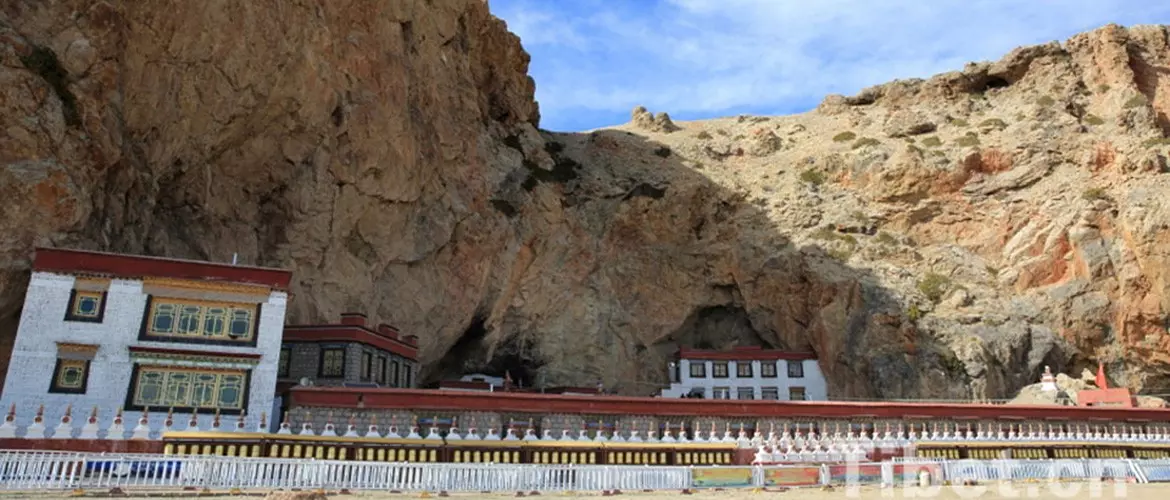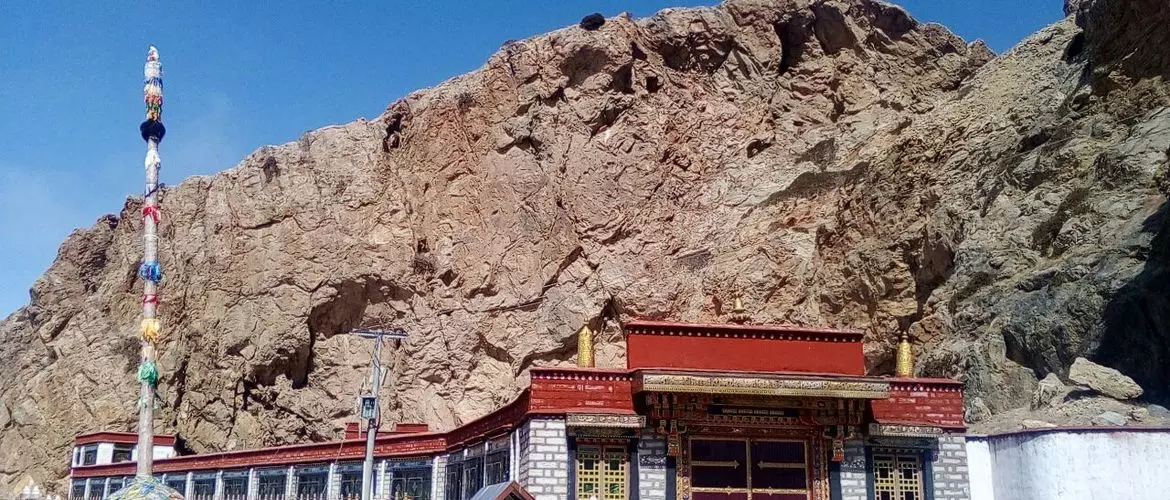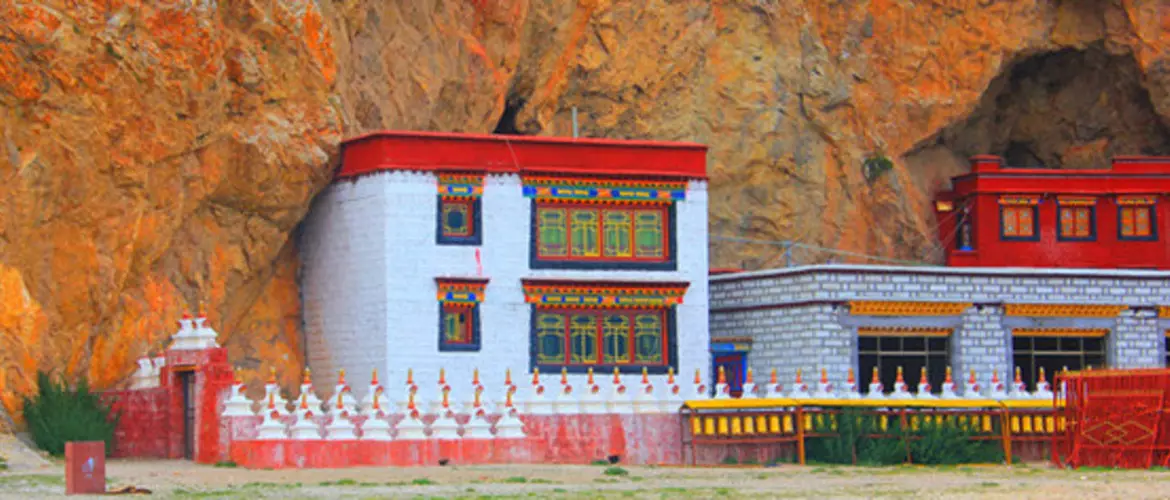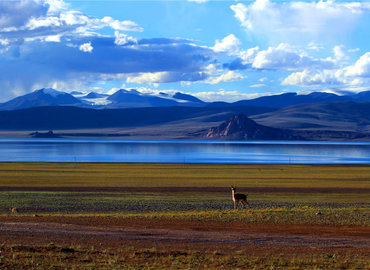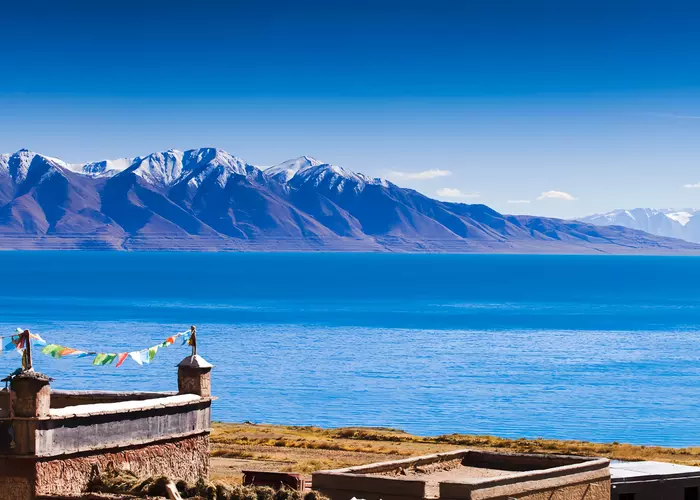Most travelers head for Tashi Dor Monastery (扎西多寺), situated on a hammerhead of land that is just into the southeastern corner of Namtso Lake. Founded in 1498 by the Gonto Batushe, Tashi Dor Monastery belongs to the Nyingma Sect. Tashi Island is composed of two islands, one large and one small. Historically, it was a practice site for major living Buddhas. There were no fixed monks except for practitioners.
Here at the foot of two wedge-shaped hills are a couple of small chapels with views back across the clear turquoise waters to the huge snowy Nyenchen Tanglha massif (7,111m).
The first chapel is smaller but more atmospheric than the other two. The main statue is of Luwang Gyelpo, the King of the nagas (snake spirits). Pilgrims test their sin by lifting the heavy stone of Nyenchen Tanglha, the god who resides in the nearby mountain of the same name (and who is also the protector of Marpo Ri, on which the Potala is built).
The second, main chapel features a central Guru Rinpoche statue and the trinity of Opagme, Chenresig and Peme Jigme, known collectively as the Cholong Dusom. Protectors include Nyenchen Tanglha on a horse and the blue-faced Namtso, the goddess of the lake, who rides a water serpent. Both gods are rooted deep in Bon belief. Several other chapels and retreats are honeycombed into the surrounding cliffs.
There are some fine walks in this area. The short kora takes less than an hour (roughly 4km). It leads off west from the accommodation area to a hermit’s cave hidden behind a large splinter of rock. The trail continues around to a rocky promontory of cairns and prayer flags, where pilgrims undertake a ritual washing and then continues past several caves and a prostration point. The twin rocks here look like two hands in the Namaste greeting and are connected to the male and female attributes of the meditational deity Demchok. Pilgrims squeeze into the deep slices of the nearby cliff face as a means of sin detection. They also drink water dripping from cave roofs.
From here the path curves around the shoreline and passes a group of ancient rock paintings, where pilgrims test their merit by attempting to place a finger in a small hole with their eyes closed. At the northeastern corner of the hill is the Mani Ringmo, a large mani wall at the end of which is a chorten with a handprint of the third Karmapa. From here you can hike up to the top of the hill for good views.
If you have enough time, it’s well worth walking to the top of the larger of the two hills (6km, 2 hours return). There are superb views to the northeast of the Tanglha range, which marks the modern border between Tibet and Qinghai.
On the eastern edge of the peninsula is a bird sanctuary populated with migratory birds between April and November. Species to look out for include bar-headed geese and black-necked cranes.
Email response within 0.5~24 hours.


